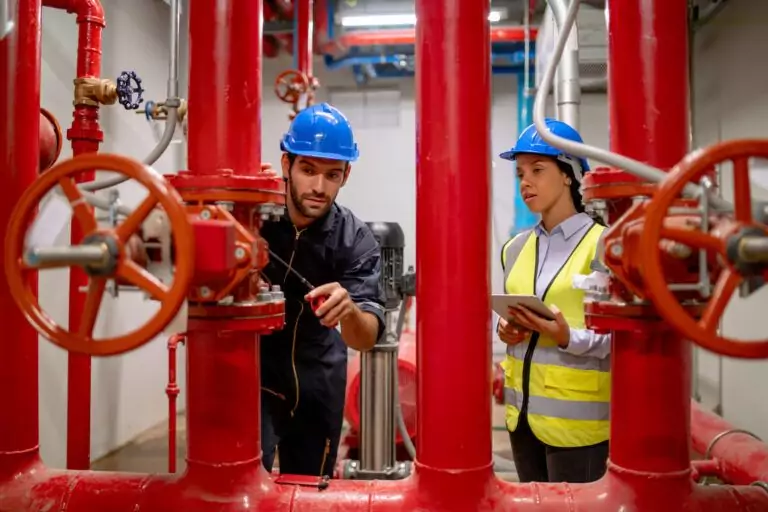How long does it take to become a mechanical engineer in Canada? The complete pathway to P.Eng. licensure typically requires 8–9 years: 4–5 years of completing a CEAB-accredited undergraduate mechanical engineering degree, followed by 4 years as an Engineer-in-Training (EIT) gaining supervised work experience, and finally passing the Professional Practice Examination. Co-op programmes can reduce the total timeline by 12–18 months by counting work terms toward EIT requirements and building a portfolio for entry-level mechanical engineering jobs. The timeline varies based on the programme structure, the quality of work experience, and provincial licensing requirements.
Exploring mechanical engineering jobs and a professional career path in Canada? Maybe you enjoy figuring out how things work. Perhaps you excel at mathematics and physics. Or you’re drawn to a field that combines technical challenges with practical problem-solving.
Becoming a licensed Professional Engineer (P.Eng.) specialising in mechanical engineering in Canada requires commitment and planning. This guide covers the complete Canadian engineering qualification pathway from prerequisite high school courses through earning your P.Eng. designation, including provincial licensing requirements, realistic salary expectations, and the mechanical engineering jobs and career paths you can pursue.
Preparing in High School
High school mathematics, physics, and chemistry courses determine university admission eligibility. Final grade averages matter significantly for CEAB-accredited engineering programmes across Canada.
Essential Courses That Build Your Foundation
Grade 12 Calculus and Vectors (MCV4U in Ontario) or equivalent provincial mathematics is required for all Canadian undergraduate engineering programmes. Universities typically require minimum grades between 70% and 85% depending on programme competitiveness. Strong mathematics foundations support success in university-level engineering courses.
Advanced functions precede calculus and provide essential preparation. Solid understanding of functions, trigonometry, and algebra supports later coursework. Calculus builds directly on advanced functions concepts.
Grade 12 Physics forms a critical foundation. Mechanics, energy, electricity, and magnetism principles extend into university physics and engineering courses. Competitive programmes typically require minimum grades of 75-80% or higher.
Chemistry provides an understanding of material properties, corrosion mechanisms, and thermodynamic processes relevant to mechanical engineering applications.
Provincial systems vary across Canada. Ontario students take Grade 12 university-preparation courses. Quebec students complete two-year pre-university Science programmes at CEGEP institutions. Other provinces follow similar patterns to Ontario, with some variations.
Competitive admission averages for mechanical engineering programmes vary by institution. Studies suggest top-tier universities may require averages in the high 80s to low 90s range, while programmes at other institutions accept students with somewhat lower averages. Check current admission requirements with specific universities.
Choosing Your Canadian Engineering Programme
What are the requirements for P.Eng. in Canada? P.Eng. licensure requires four core elements: graduation from a CEAB-accredited engineering programme, completion of 48 months of acceptable engineering work experience under P.Eng. supervision, passing the Professional Practice Examination, and demonstrating good character. CEAB accreditation is essential; graduates from non-accredited programmes must complete additional confirmatory examinations and assessments, potentially adding 2-5 years to the licensing timeline. Provincial requirements remain largely consistent across Canada with minor procedural variations.
CEAB (Canadian Engineering Accreditation Board) accreditation ensures your degree meets standards for Professional Engineer licensing in any Canadian province or territory. International engineers without CEAB-accredited degrees often spend considerable time and effort satisfying equivalency requirements.
Understanding CEAB Accreditation
The Canadian Engineering Accreditation Board evaluates university undergraduate engineering programmes through six-year review cycles, assessing curriculum content, faculty qualifications, laboratory facilities, and graduate outcomes. Verify CEAB accreditation before applying to any programme.
Without CEAB accreditation, you’ll typically complete additional confirmatory examinations, technical assessments, or bridging programme requirements. Engineers Canada maintains the current accreditation list on their website.
Co-op Programmes Versus Traditional Programmes
Cooperative education (co-op) programmes typically take five years, including eight academic terms and four to six paid work terms. Traditional programmes take four years. While five years represents a longer commitment, co-op programmes offer significant advantages.
Work terms typically pay £16-24 per hour (roughly $20-30 CAD). Multiple co-op terms can generate substantial earnings that help offset tuition and living expenses.
Co-op terms may count toward up to 12 months of the 48-month Engineer-in-Training (EIT) experience requirement for P.Eng. licensing. You’ll experience different companies and roles, building a professional network before graduation. Many co-op graduates receive job offers from co-op employers.
Studies suggest co-op engineering graduates often secure employment more quickly than traditional programme graduates, though outcomes vary by economic conditions and individual performance.
Your University Engineering Education
The curriculum is standardised across CEAB programmes with 1,950 total programme hours. You’ll study similar core courses regardless of institution. The workload is substantial; engineering students typically spend 25-35 hours weekly in lectures, tutorials, and laboratories, plus additional time on assignments and exam preparation.
Core Curriculum Overview
First year covers fundamentals across all engineering disciplines: calculus, chemistry, physics, engineering graphics, basic programming, statics, and dynamics. First year establishes essential foundations, and some students discover engineering isn’t their best fit.
The second year introduces core mechanical engineering concepts: solid mechanics, thermodynamics, fluid mechanics, material science, and electrical circuits.
The third year explores specialised topics: heat transfer, machine design, manufacturing processes, control systems, and vibration analysis. This is where mechanical engineering becomes particularly engaging.
Fourth year emphasises design. The capstone project consumes considerable time over two semesters as multidisciplinary student teams solve complex engineering problems. Capstone projects develop project management and teamwork skills alongside technical capabilities.
Laboratories reinforce theoretical concepts through hands-on experience. Lab reports develop technical writing and documentation skills essential for professional practice.
Building Experience Beyond Coursework
Design teams provide practical experience outside the classroom. Formula racing teams, concrete canoe teams, and robotics competitions allow students to apply engineering principles to real projects. Active participation typically requires 10-20 hours weekly, but develops skills employers value.
Summer internships between academic years build experience and may contribute 4-8 months toward the 48-month EIT requirement when supervised by licensed engineers. Summer positions often lead to full-time employment after graduation.
The Licensing Process and P.Eng. Designation
What is the P.Eng. designation? Professional Engineer (P.Eng.) is the protected professional designation in Canada that legally authorises engineers to take responsibility for engineering work, seal drawings and specifications, and offer engineering services to the public. Each province has its own regulatory body overseeing licensure: Professional Engineers Ontario (PEO), Association of Professional Engineers and Geoscientists of Alberta (APEGA), Engineers and Geoscientists BC (EGBC), and others. P.Eng. designation signifies you’ve met rigorous education, experience, examination, and character requirements establishing professional competence.
Graduating with a CEAB-accredited mechanical engineering degree doesn’t automatically make you a licensed professional engineer. Additional requirements must be satisfied before you can take responsibility for engineering work, seal drawings, or use the P.Eng. designation.
The Engineer-in-Training Period
Register as an Engineer-in-Training (EIT) with your provincial engineering regulator soon after graduation. Submit your CEAB degree transcript, application forms, and registration fees to begin the formal process.
The EIT period requires 48 months of acceptable engineering experience, work where you apply engineering knowledge and make engineering decisions under supervision. This represents four years of full-time engineering employment.
Acceptable experience means work directly supervised by licensed engineers. Administrative tasks and technician-level work typically don’t qualify. Actual engineering analysis, design decisions, and technical problem-solving count toward your experience requirement.
Select a supervisor who’s a P.Eng., willing to mentor your development, review your experience reports, and verify your engineering contributions. Quality mentorship significantly affects professional development during EIT years.
Maintain detailed records describing specific projects, your engineering responsibilities, technical methods applied, calculations performed, and design decisions made. Thorough documentation supports your eventual P.Eng. application.
Provincial Regulatory Requirements
Each province maintains its own self-regulating professional engineering association with core requirements that remain largely consistent: CEAB degree, 48 months of experience, Professional Practice Examination, and good character references. Administrative processes vary by province.
The Professional Practice Examination (PPE) tests law, ethics, and professional practice topics, including engineering liability, contracts, environmental regulations, and professional conduct. Most provinces offer open-book examinations, though questions require understanding the application of principles rather than simple memorisation.
Career Benefits of P.Eng. Licensure
Canadian provincial engineering Acts restrict certain engineering work to licensed professionals. Only P.Eng. holders can sign, seal, and take professional responsibility for engineering drawings, specifications, and reports, a legal requirement for specific work types.
Offering engineering services directly to the public requires P.Eng. licensure. While corporate employment doesn’t always require licensing, many companies prefer or require the P.Eng. designation for promotion to senior positions. Career advancement often accelerates after licensure.
P.Eng. designation typically corresponds with salary increases as engineers take on greater responsibility. Companies compensate for the professional liability that P.Eng. holders can accept.
Not every mechanical engineer pursues licensing. Some work in manufacturing, product design, or sales roles that don’t legally require P.Eng. However, licensure expands career options and mobility throughout your professional life.
Career Paths and Specialisations
Your CEAB-accredited mechanical engineering degree opens multiple career directions across manufacturing, energy, consulting, government, research, and entrepreneurship sectors.
Industry Roles and Consulting Opportunities
Manufacturing companies hire mechanical engineers for plant operations. Automotive OEMs, aerospace manufacturers, and industrial equipment producers. Optimise production processes, design manufacturing equipment, and solve operational challenges. Projects focus on internal operations, developing deep expertise in specific manufacturing systems.
Energy companies need mechanical engineers for facilities operations and development. Power generation, oil and gas, and renewable energy sectors. Maintain generation equipment, design process modifications, and support facility expansions.
Consulting firms like Vista Projects offer project variety across multiple client engagements simultaneously. Projects typically span 3-18 months across different industries. This variety provides exposure to diverse technical challenges and industry sectors.
Consulting involves business development responsibilities, including proposal writing, client meetings, and tight deadlines. The pace differs from in-house roles, requiring adaptability and strong project management skills.
In-house positions offer stability through direct employment with single organisations, enabling deeper technical specialisation in specific systems or processes.
Compensation structures vary between consulting and in-house roles. Consulting firms may offer somewhat higher base salaries, while in-house manufacturing roles sometimes provide stronger benefits packages, including pension plans and vacation time. Evaluate total compensation rather than base salary alone.
Specialisations That Create Opportunities
Renewable energy systems remain in demand as Canada expands clean energy infrastructure. Specialised knowledge in solar, wind, and battery storage systems creates career opportunities.
Manufacturing automation and robotics specialists apply mechanical engineering principles to automated systems. Experience with industrial robotics, automated assembly systems, and Industry 4.0 technologies.
Aerospace engineering requires specific knowledge of aircraft structural analysis and propulsion system thermodynamics, often requiring security clearances that create barriers to entry.
Advanced manufacturing encompasses additive manufacturing, 3D printing technologies, and design for additive manufacturing principles. This emerging field continues to develop with growing industry adoption.
Salary Expectations Throughout Your Career
How much do mechanical engineers make in Canada? Mechanical engineer salaries vary significantly by province, industry sector, and level of experience. Compensation depends on multiple factors: province of employment, industry sector, experience level, specialisation, and current economic conditions.
Entry-Level and Early Career
New graduates with CEAB mechanical engineering degrees see starting salaries that vary regionally. Alberta and resource-rich provinces may trend higher during economic expansion periods, particularly in the oil and gas sectors. Economic downturns affect regional variations significantly.
Cooperative education work experience may positively affect starting offers. Studies suggest co-op graduates sometimes receive higher starting salaries compared to traditional programme graduates, though individual circumstances vary.
Industry sector affects compensation. Oil and gas, aerospace, manufacturing, and consulting firms each have different typical salary ranges. Benefits matter beyond base salary, health coverage, retirement matching, professional development budgets, and bonus structures contribute to total compensation. Compare complete packages rather than base salary alone.
Your first job rarely defines your entire engineering career. Mechanical engineers commonly change industries multiple times throughout their careers. Early positions focus on gaining experience and developing professional skills, start by browsing current engineering opportunities that match your interests and location.
Career Progression and Specialisation
P.Eng. designation typically corresponds with salary increases upon licensing completion, though specific amounts vary by employer and market conditions.
Mid-career engineers with 5-10 years of experience and established track records see compensation reflecting their expertise and responsibilities. Industry roles, consulting positions, and senior positions each offer different compensation ranges.
Specialisation in high-demand areas may increase compensation. Renewable energy system design, industrial automation, and niche technical expertise create value in competitive markets.
Geographic mobility affects opportunities. Remote locations, northern communities, and resource sector positions sometimes offer location premiums and housing allowances that increase total compensation.
Career progression matters throughout your professional life. Seek employers that develop talent and promote from within. Long-term growth trajectory affects career satisfaction and financial outcomes more than starting salary alone.
Making an Informed Career Decision
Mechanical engineering offers solid professional careers. Canadian studies suggest relatively low unemployment rates for P.Eng. holders across economic cycles. The profession provides opportunities to work on meaningful technical challenges contributing to infrastructure, manufacturing, and energy systems.
The university coursework challenges students academically. A mathematics-intensive curriculum requires dedication and consistent effort. Understanding whether engineering suits your interests and abilities before committing helps ensure successful outcomes.
P.Eng. licensing requires commitment beyond graduation. Four years of documented engineering experience, maintaining detailed records, and exam preparation. Understanding these requirements helps you plan your professional development pathway.
Job markets fluctuate with economic conditions affecting different sectors. However, mechanical engineering skills remain valuable across multiple industries, providing career flexibility and resilience.
The profession offers meaningful work opportunities. Integrated engineering firms like Vista Projects work on projects including carbon capture and storage, renewable energy integration, and energy efficiency improvements, contributing to Canada’s sustainable energy transition.
Self-assessment helps clarify fit. Are you genuinely curious about how mechanical systems work? Comfortable with applied mathematics and physics? Willing to invest years in education and professional development? Understanding your motivations and capabilities supports informed decision-making.
Connect with working engineers, visit university campuses, and talk with current students. Direct conversations provide insights beyond official materials and help you understand the day-to-day realities of the profession.
Consider your options thoroughly. Different engineering disciplines, technology careers, and related fields each offer distinct advantages and challenges. Research alternatives to make informed comparisons.
If mechanical engineering aligns with your interests and goals, approach the journey with commitment and realistic expectations. The profession rewards genuine interest, a solid work ethic, and continuous learning throughout your career.
Disclaimer: This article provides general career guidance and should not be considered professional career counselling or definitive employment advice. Engineering licensing requirements, university admission criteria, programme structures, and compensation ranges vary significantly by province, institution, employer, industry sector, and individual circumstances. Salary figures represent general industry ranges based on available 2025 data; actual compensation depends on numerous factors, including geographic location, economic conditions, specialisation, employer type, negotiation, and individual performance. Career timelines vary based on educational path, co-op participation, work experience quality, and provincial licensing processes. Unemployment rates and job market conditions fluctuate based on economic cycles and regional factors. Always verify current information with provincial engineering regulators, specific universities, Engineers Canada, and prospective employers. Consult with academic advisors, career counsellors, and licensed engineers for personalised guidance relevant to your situation and career goals.









